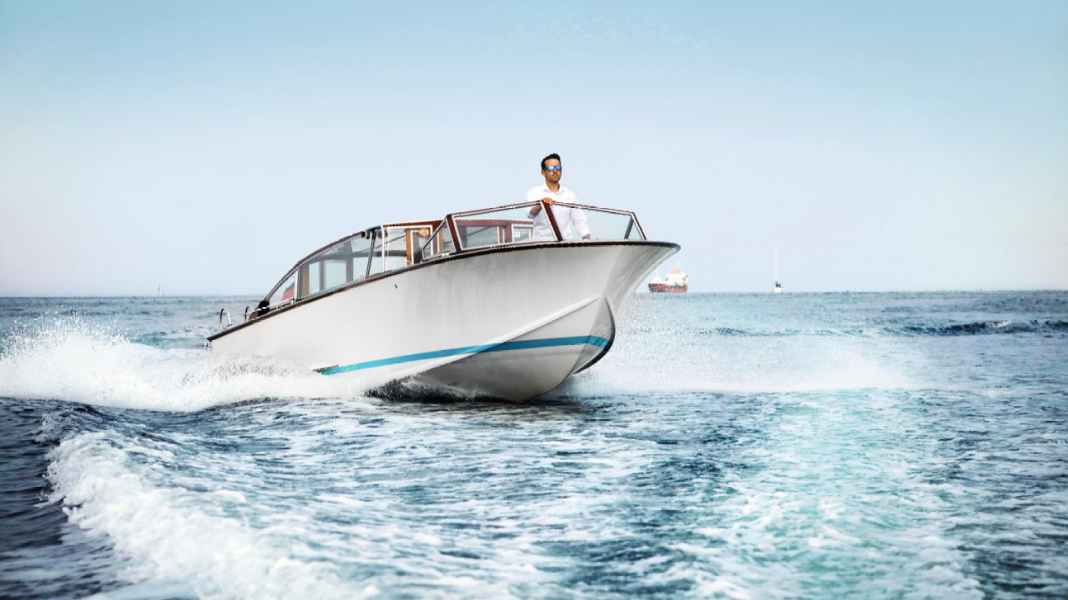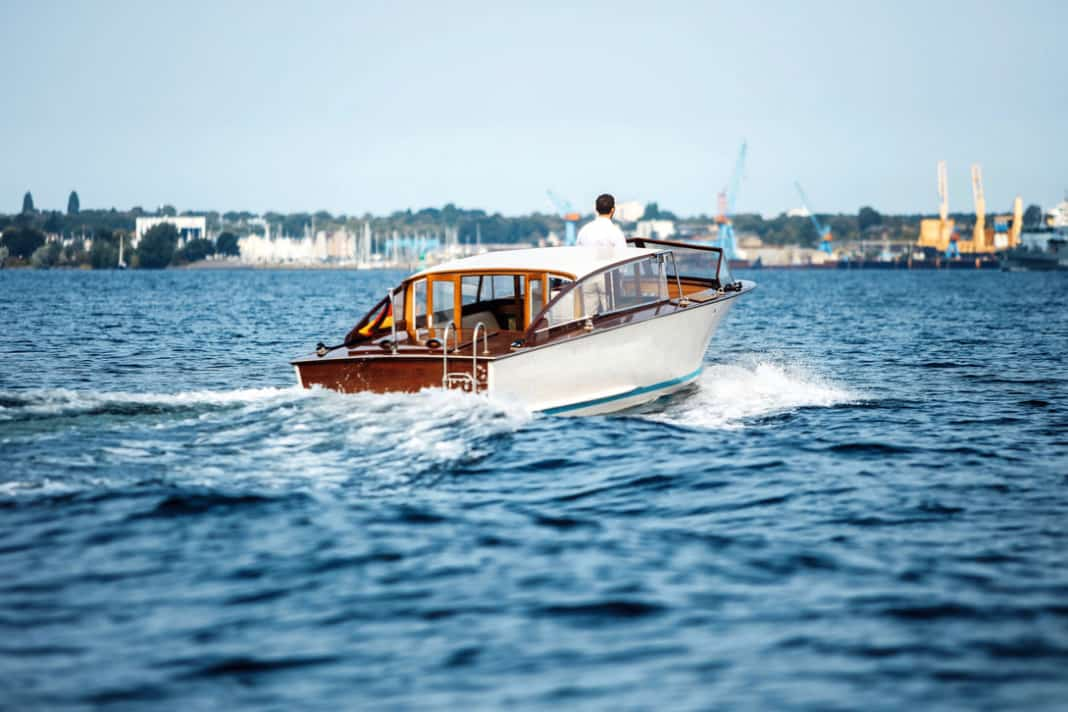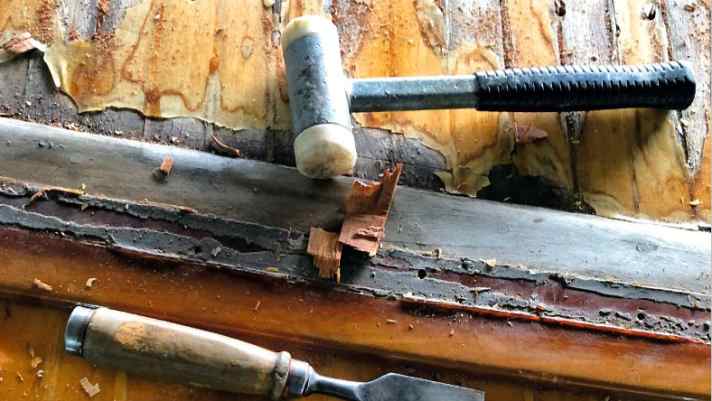
A pleasant 25 degrees, a gentle breeze blowing in from the Adriatic and the smell of fish and pizza drifting through the seemingly endless labyrinth of small alleyways: This is Venice. The famous St Mark's Basilica with its golden domes, the romantic Rialto Bridge over the Grand Canal and, of course, the almost 175 canals on which gondoliers chauffeur tourists. If you want to get from one of the more than 100 islands on which the historic centre is built to the next, it's best to take one of the many water taxis - the majority of them motoscafi called. Well over half of Venice's total surface area consists of waterways. But quite apart from the practical reasons, a motoscafo Simply style. You could hardly be more authentic when travelling there.
1,000 kilometres further north: Benyamin Tanis takes a big, careful step onto the immaculate deck of his pride and joy, checking the soles of his shoes to make sure there are no stones stuck underneath. The Venetian water taxis, created by masters of the art of boat building, have taken a shine to the North German. And now, thanks to him, there is a touch of Venice on the western shore of the Kiel Fjord.
Update: The "Serendipità" will be auctioned as part of the "Classic Forum" during boot Düsseldorf in January 2025! The auction will take place on 25 January from 11 am. More info: Maritime treasures: Classic dream boats at the "Classic Forum" auction
The 2.35 metre narrow and 9.20 metre long hull of the water taxi is naturally used to warmer waters; the "Serendipità" also spent 40 years in the turquoise blue canals of Venice. Now the Italian gem is rocking in the drizzle on the choppy Kiel Fjord. But at least the boat with its dignified 1930s design has been given a fresh coat of paint for its new home: A white coat of epoxy resin and fibreglass now protects the old planks and gives the small passenger boat the necessary stability for the rougher Baltic Sea waves. Raindrops roll off the shiny mahogany deck. It is almost autumn. Of course, the cloudy sky over Kiel means that the north German coast is no match for the Mediterranean lagoon. And yet Ben Tanis stands at the helm with a broad grin and lets his gaze glide over the elegant fittings and then over the fjord.
He has managed to combine his passion for Italian design and Venetian boatbuilding with his love of his homeland. When he explains how he and the taxi boat came together, his eyes light up.






The meaning of the name
"'Serendipità' means something like 'happy coincidence'," explains the 36-year-old. Two years earlier, he and his wife had fallen in love with water taxis in Venice. Friends who live in Venice were jokingly told to keep their eyes open. "These boats don't actually leave Venice, it's an unwritten law. They are only built there by three or four different shipyards. And they cost a good 250,000 euros new. Everything is handmade. Each piece is unique and made of wood, nothing is industrially manufactured," Ben explains enthusiastically. He would never have seriously considered buying one.
An unexpected surprise
But a year later, they are back in Venice. And said friends greet him and his wife with a surprise: "By the way, we've found a boat for you! "When they told me that it only cost 10,000 euros, I immediately thought, 'We don't even need to look at that. It can't be anything." For three years, the motoscafo had been lying dormant on dry land. The shipyard owner had died unexpectedly and his son didn't really know what to do with the beautiful piece. It was important to him that it ended up in good hands, Tanis recalls. No problem - because it was love at first sight.
Tanis smiles: "I'm actually more familiar with this from my clients, because I look after people who also want to buy boats. And then I'm constantly preaching that they should leave their emotions at home, that it has to be a sober decision. Looking back, I wonder what was wrong with us that day! My wife said straight away: 'That boat is so beautiful, we have to buy it! Of course, we completely underestimated how much work would have to be put into it and how expensive it would be, even though I'm a professional. In the end, it cost us as much as a condominium, about half the price of a new one."
They buy the boat on the same day with a handshake. There are still a few bureaucratic hurdles to overcome to get it out of the lagoon city. But just four weeks later, the almost three-tonne beauty is on its way across the Alps on a low-loader from Sleepy Yachttransport in Heikendorf.

"When the lorry arrived, we were still convinced that the boat was in good condition and that the necessary work wouldn't be that expensive," says Tanis, "until we took it to our boat builder friend Rouven Rademacher." In homeopathic doses, the experienced master craftsman teaches the new owners that a lot needs to be done. Nevertheless, everyone involved tackles the project with enthusiasm. The boat is completely stripped, and the drive, engine and superstructure are dismantled.
After sandblasting at the latest, it is clear that a simple paint job is out of the question. To give the ageing hull more stability and not least for visual reasons, because the wood is damp in many places and can no longer be saved, Rademacher coats the mahogany hull with epoxy resin and glass fibre. Finally, six coats of varnish are applied. Master boat builder Armin Hellwig, who specialises in high-quality, customised wooden interior fittings, then renews all the wooden parts, from the running deck to the engine hatch.
An industrially manufactured panel for the heavily curved forecastle was out of the question. Sooner or later, the curvature would have caused the varnish to crack. The deck is therefore first closed with twelve millimetre thick mahogany plywood before a layer of mahogany veneer is applied. The foredeck and stern are finished with light-coloured beech veins. New white leather upholstery, new windshield, new cabin windows - in the end, the motoscafo as elegant as it probably was when it was last launched in 1981. "The hull was new, the deck was new. So we at least wanted to preserve the engine," remembers Tanis. So the aged big-block engine was put to the test. Six litres of displacement and 150 horsepower are at the red heart of the old lady.
It soon becomes clear that the Iveco is only running on three of its six cylinders - and they don't have enough compression. After some searching, they find the company Sauer und Sohn in Dieburg, Hesse. The only company in Germany that really knows its way around these machines and can completely overhaul them once. "The great thing about the whole restoration process was that everyone involved was passionate about what they were doing and a friendly relationship was built up with everyone because it is a very special project. A real friendship developed with the previous owner, the Venetian shipyard manager. We kept him informed of every step and also invited him to the christening in Kiel." Finally, the boat will be fitted with a new Z-drive from Volvo Penta - the same model that was installed 40 years ago.
Premiere on the Baltic Sea
Almost a year later, the time has finally come. The "Serendipità" touches Baltic Sea water for the first time in its life. The wind picks up over the fjord and it starts to get uncomfortable at the helm, which, unlike the cabin, is exposed to the wind and weather. Tanis turns the boat round and steps on the gas. Many a passenger will be surprised at the power that lies beneath this elegant hull, which at first glance appears rather cumbersome. "Up to 22 knots would be the motoscafi if they were allowed to," enthuses Tanis and sets course for the harbour, where his "lucky find" can now rest for a few more months before its second life begins exactly 1000 kilometres north of its home.

